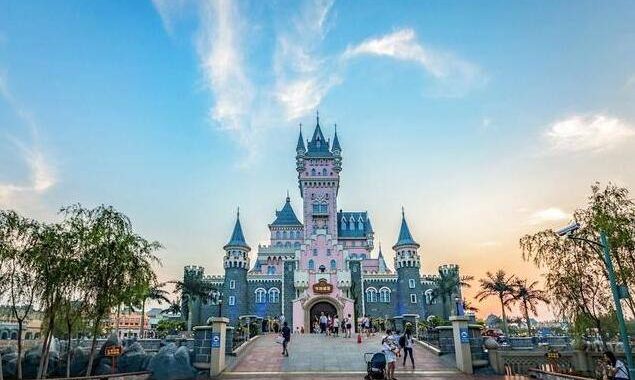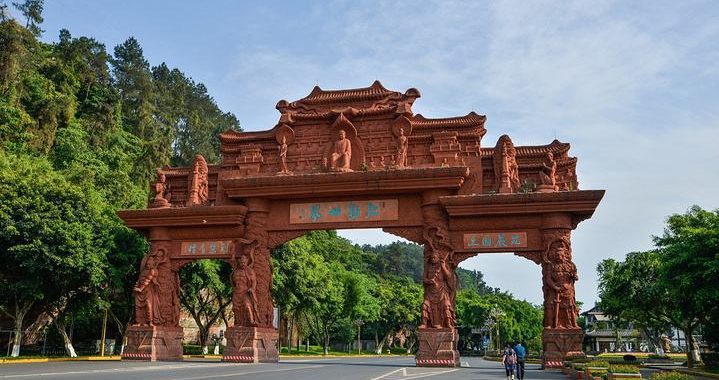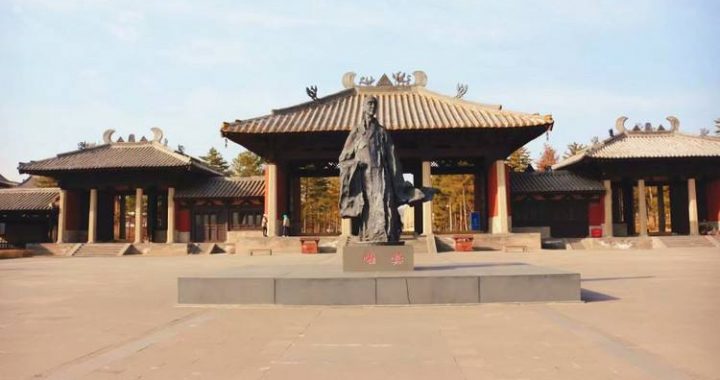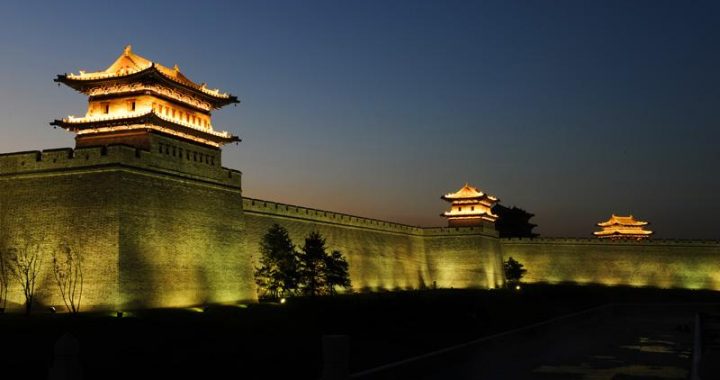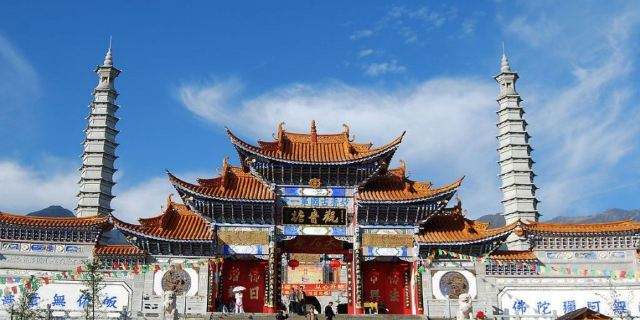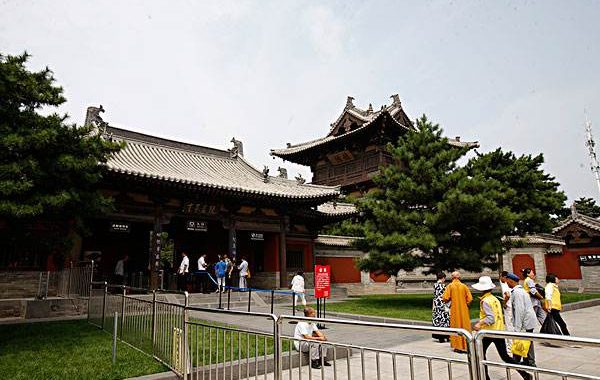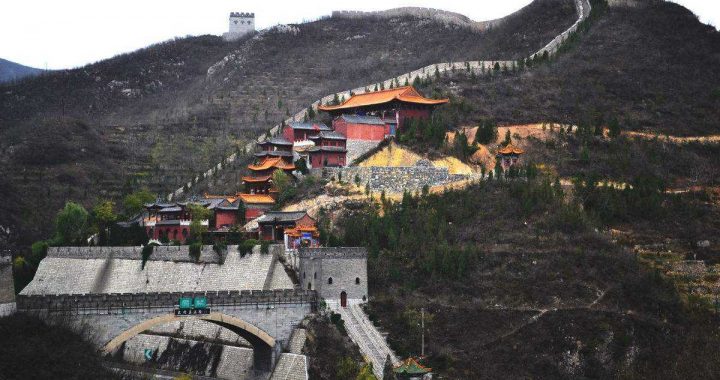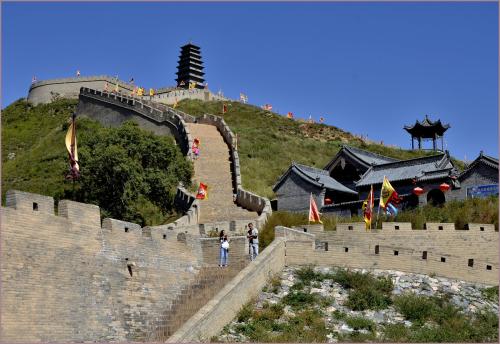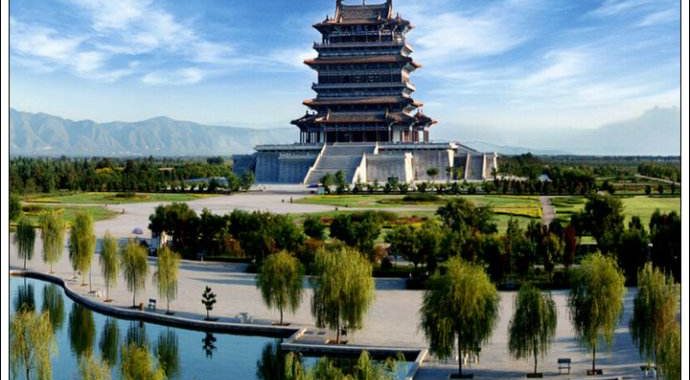Datong-Great Unity
7 min readGreat unity in the world.
The sky is infinitely high, showing its greatness; Everyone on the earth lives under the same sun, showing their unity.
Everything is in order;
All abide by rules.
Therefore, we see differences in greatness and beauty of unity.
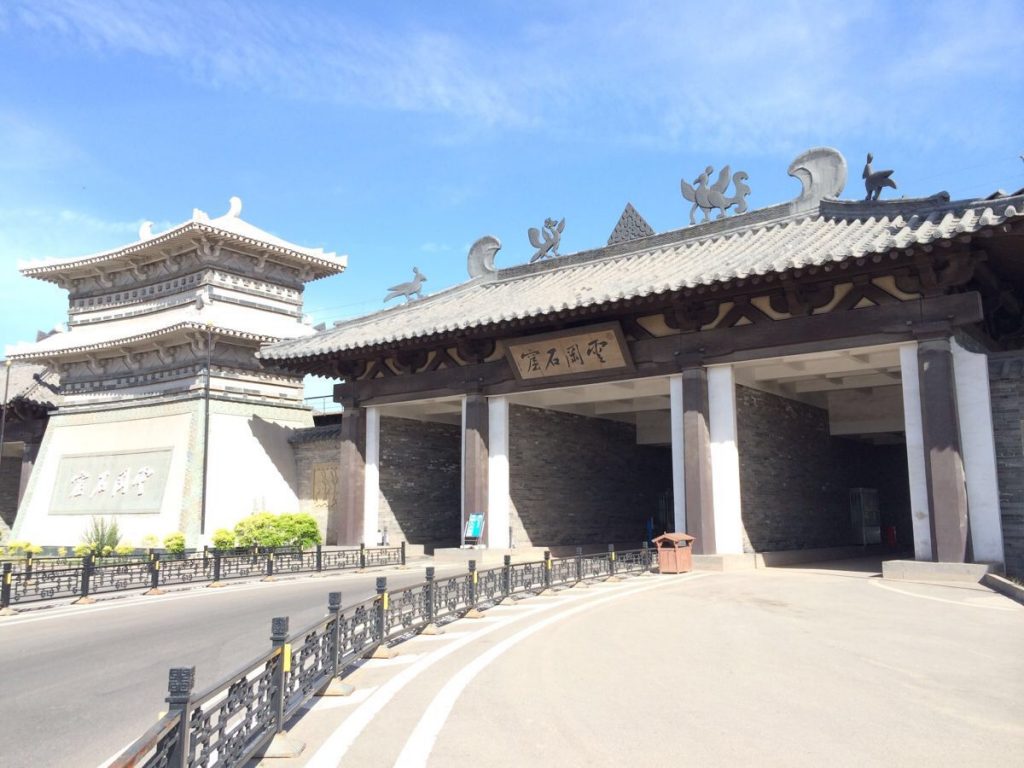
If we look at the various flowers under the blue sky in Datong or Great Unity in English, we can enjoy the most beautiful spring in this world of great unity.”When the Great Way is practiced, the world is for everyone. Those with virtue and those with ability are chosen and used. People value trustworthiness andcultivate a common harmony. Thus people do not treat only their parents like parents, nor do people treat only their sons like sons. That gives older people much better twilight years, those in their prime have appropriate employment, and the young have appropriate growth and development. Elderly men with no spouses, widows, orphans, elderly people without children or grandchildren, the handicapped, the ill-all are provided for… This is called the ‘ Great Unity’.”Confucius’s blueprintof humane society is the warmth of the Sun City-an oriental idea and the main theme of the Chinese Nation. It is the ultimate goal that Chinese people have been striving for.
Datong(great unity), as the name of a city; it is a recognizable symbol; as a human ideal and pursuit, it is a sacred symbol that calls men to the world of great unity.
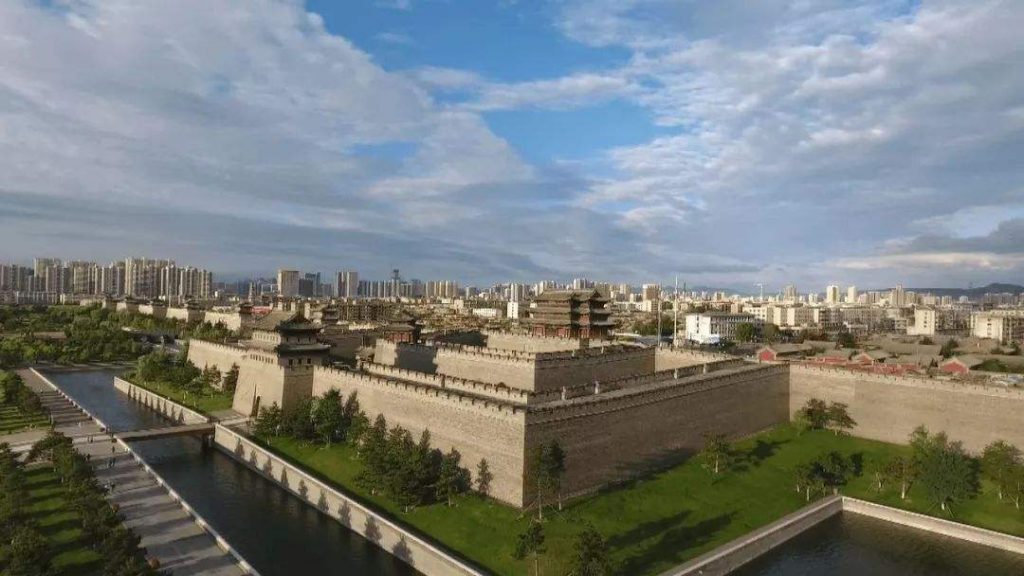
Datong, an ancient city in the nomadic and farming transition zone, ranks No.3 among the list of 24 historical and cultural cities in China. It was called Pingcheng, Hengzhou and Yunzhong in history.
In terms of geographical location, Datong is at the same longitude as Changsha and Guangzhou and the same latitude as Washington, Madrid and Beijing.
Datong is surrounded by the Great Wall, and it is located on the banks of the Sanggan River. It borders Shahukou with the frontier to the west, Yanmen Pass with its beautiful apricot blossoms to the south, and Hengshan Mountain lies just a few dozen km away in the southeast. The unique location helps to create its spectacularly varied scenery.
Gu Zuyu wrote in the Dushi Fangyu Jiyao (Essence of Historical Geography):
“Datong, bordering the Great Wall in the north, with the Yanmen Pass to the south and the desert to the west, is a city of great strategic importance… Bordering the Yellow River to the west and the desert to the north, it is an important frontier fortress that guards the capital.”Hu Wenhua, Datong prefect during the Qing Dynasty, said with great emotion:”Datong is a city strategically important to the empire and it cannot be capture.”
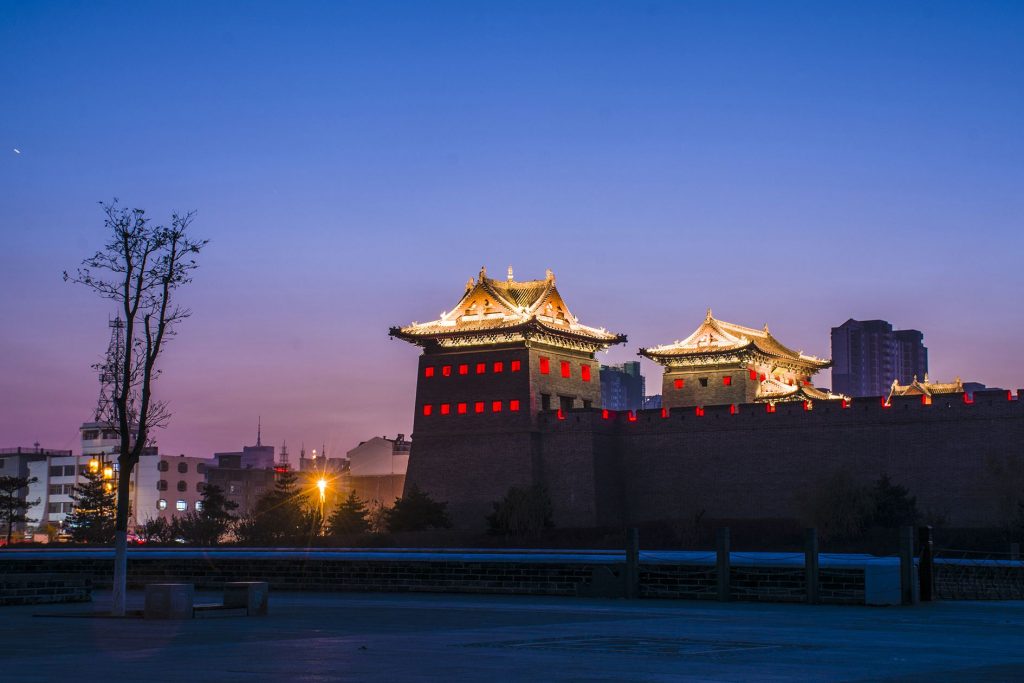
A lot of Paleolithic civilization ruins from over 100,000 years ago have been found in Datong. Very early Homo sapiens fossils were unearthed in Xujiayao Village, Yanggao County, Datong. The ruins of Xujiayao are believed to be traces left by a branch of Peking Man’s descendants who migrated here.
Nihewan is known as the Paleolithic Mecca and the Cradle of Human Culture in East Asia. In 1923, the British geologist George Barbour while teaching at Yanjing University, discovered rhino and other freshwater mammal fossils here and named the fossil-bearing strata the Nihewan Beds.
The Huihe River and Yuanzi River, both of which flow from the northwest of Shanxi, converge to form the wild and broad Sanggan River.
The Nihewan people living on both sides of the Sanggan were among the first to experience the light of civilization. Nihewan is recorded on the first step of the bronze path engraved with motifs from Chinese history and civilization on the China Millennium Monument in Beijing. China has 25 sites which date from 1 million years ago, and 21 of these are scattered around the Sanggan basin. The Yangshao Culture of the Central Plains, the Hongshan Culture of the Northeast and the Hetao Culture of the Northwest converge here. Archaeologist Su Bingqi called it a vital junction point of Chinese civilization.
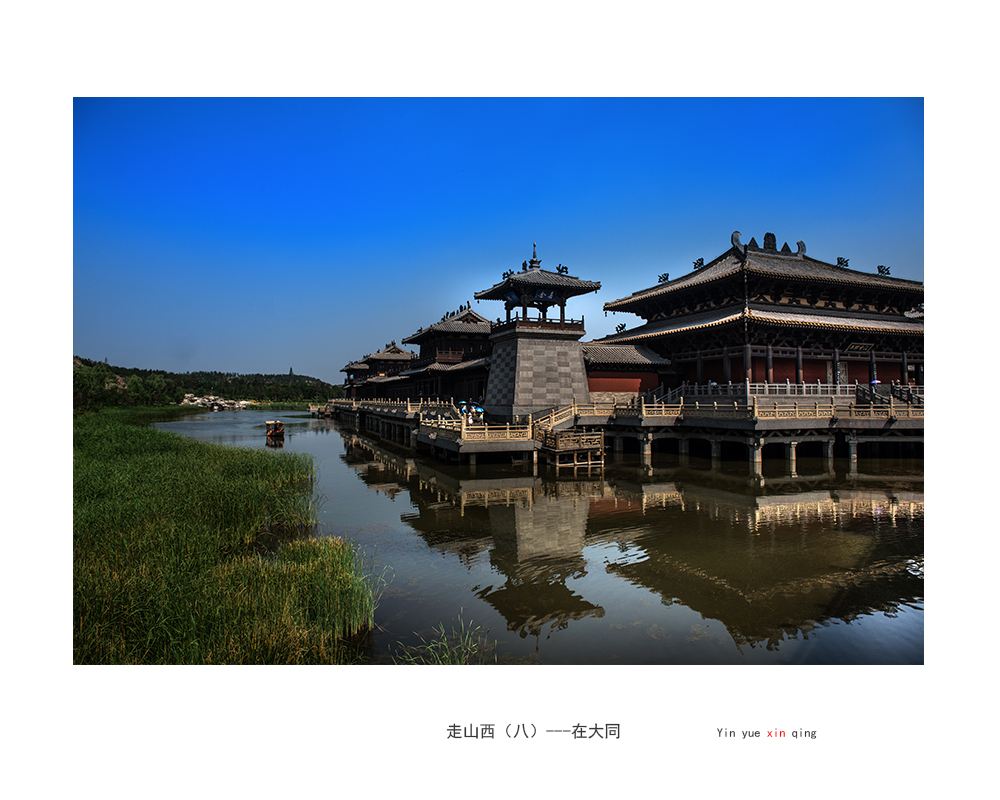
The Hunhe River and Yuhe River in Datong are tributaries of the Sanggan River.
The Sanggan River, leaves Datong and flows to Beijing. It was first called theWuding River and then the Yongding River. It flows on into the Haihe River in Tianjin and finally into the Bohai Sea.
Xujiayao Man and Nihewan Man are glorious chapters in the evolutionary history of Datong Lake. The Nihewan Basin is also known as the Sanggan Basin and the Datong Basin. Two million years ago, Datong Lake covered a vast area of 9,000 square km.
After tectonic movement, the bottom was elevated and a basin was formed.
The famous poem by Jia Dao reads:”There are Five Great Mountains with Shanxi’s Hengshan Mountain in the north.””The Northern Mountain looks like someonewalking, the Eastern Mountain like someone sitting, the Western Mountain like someone standing, the Central Mountain like someone lying and the Southern Mountain like someone flying.”

Hengshan Mountain in Shanxi is world-famous as an important Taoist shrine. The huge religious building complexes on the main peaks are undoubtedly amazing visual historical archives that bear witness to the development of Taoism on Hengshan Mountain.
Datong has a splendid history. Ancient nomads commonly known as Beidi lived in the Datong area, north of the Yanmen Mountain, during the Spring and Autumn Period.
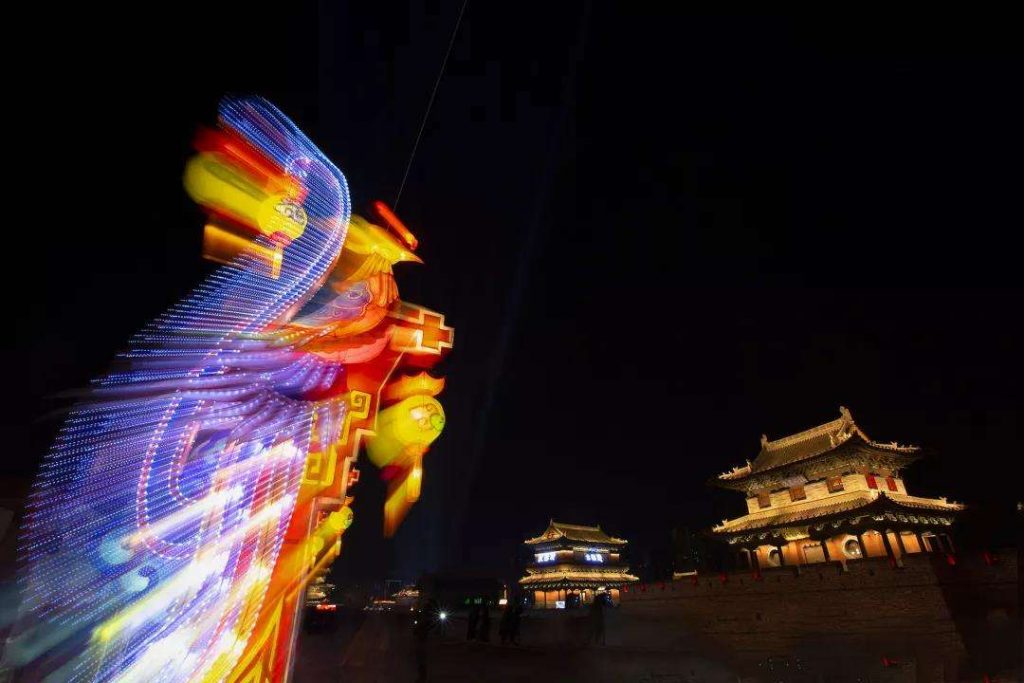
Baidi, descendent of Quanrong established the State of Dai here in the Shang and Zhou Dynasties. This state merged with the State of Zhao, when it was called Daidi.
Datong was under the jurisdiction of the State of Zhao during the Warring States Period and belonged to Daiju during the Qin and Han empires. Liu Heng, son of Liu Bang, was made a Prince of Dai, and later ascended the throne and was known as Emperor Wendi of the Han Dynasty.
In existence since the introduction of the Wearing Barbarian Uniform reforms and the Use of Cavalry in Battle by King Wuling of the Zhao State, Datong City has been a city for 2,300 years.
In the 3rd year of the reign of the Han Emperor Gaozu (204 BC), Modu of the Hun killed his father and made himself king, and then invaded a number of other states.
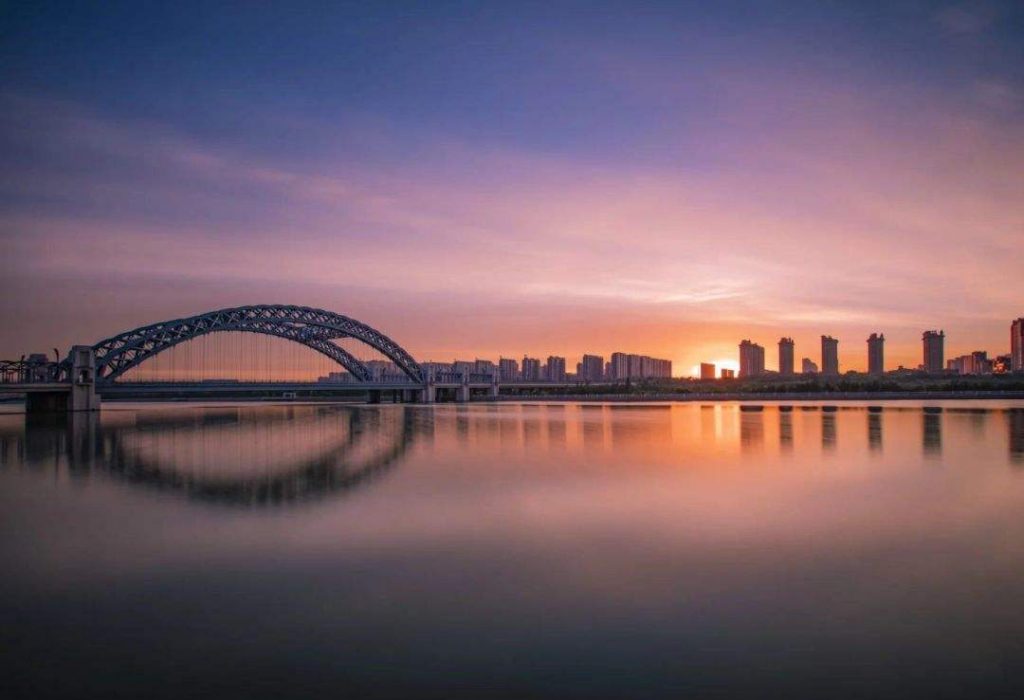
Liu Bang was enraged and personally led a force of 320,000 troops in a crusade against the Hun. Unfortunately, Liu Bang ended up being besieged for seven days by Modu Chanyu at Baideng Hill in Pingcheng (Datong). Later, he listened to his counselor Chen Ping’s suggestion and made peace with Modu through marriage.
Wang Mang called Pingcheng Pingshun after usurping the throne. In the Eastern Han Dynasty (25-220), it was renamed Pingcheng; in the Wei of the Three Kingdoms(220-280) and the Western Jin Dynasty (265-316), Pingcheng was still a county as it had been in the Western Dynasty (206 BC-25AD).
In 398 or the 1st year of the reign of Emperor Taizu in the Northern Wei(386-534) of Northern and Southern Dynasties (386-589), Tuoba Gui rebuilt the State of Dai and changed the name of the state to Wei. First, he made Shengyue (now Horinger County in Inner Mongolia) his capital, and then moved the capital to Pingcheng, which had served as the capital of the Northern Wei for his reign of 96 years (398-494).
In 526AD, Pingcheng was abandoned during the Rebellion of Six Towns. In the Eastern Wei, Western Wei, and Northern Qi eras, Pingcheng was called Hengan Town, Hengzhou and Taiping County respectively.

From the Qin Dynasty (221 BC-206 BC) to the Northern Zhou (557-581) of Northern and Southern Dynasties (386-589), namely 200 BC-556AD, the name of Pingcheng remained unchanged for 757 years In 557-577 AD, the Northern Zhou Dynasty replaced the Western Wei Dynasty anddestroyed the Northern Qi Dynasty. The new rulers changed Pingcheng’s name to Yunzhong County-this was the first time that Datong was called Yunzhong.
In the Sui (581-618) and Tang (618-907) Dynasties, Pingcheng was called Yunzhong or Yunzhou, or Hengzhou. The troops stationed here by the Tang Emperor Wuzong were from different ethnic groups, so the force was often called the Datong Army. The Khitan people founded the State of Khitan and later changed the name to Liao. They called Yunzhong Datong, and they made it a provisional capital called Xijing to protect their capital Linhuang (now Baarin Left Banner in Inner Mongolia).
The name of Datong thus became the name of a place, marking a new era for the ancient city In 960 AD, the Northern Song recovered the Sixteen Prefectures of Yan and Yun and established Datong as Yunzhong Prefecture.
In 1044 or the 13th year of the reign of Emperor Xingzong of Liao Dynasty (916-1125), namely the hyear during the reign of Emperor Renzong in the Northern Song Dynasty (960-1127), Xijing was established as Datong Prefecture.
Jin still called Datong Xijing after destroying the Liao in 1125. The Yuan Dynasty (1279-1368) set up 11 provinces in the country. Datong was established as Lu(administrative district), under Hedong Shanxi Circuit of the Secretariat. In 1277, when visiting China, the Italian traveler Marco Polo was impressed by the spectacular features of Datong Road, and he described Datong as “a magnificent and beautiful city”in his book Travels of Marco Polo.
In 1368, Zhu Yuanzhang established the Ming Dynasty (1368-1644).. The following year, he sent Chang Yuchun to launch an attack Datong. The Chancellor of the Right of the Yuan Dynasty and the general in charge abandoned the city, so Datong was captured without a fight. The Ming Empire changed Datong Lu into Datong Prefecture, and established it as one of their Nine Garrison Towns.
In the Ming Dynasty, the total troops stationed in Datong Prefecture numbered 130,000 and there were more than 50,000 horses, showing the military importance of the city.

In 1644, Li Zicheng led his army to Datong after breaking through the Ningwu Pass and the Yanmen Pass. After resting for a few days, they marched toward Beijing and overthrew the Ming Dynasty.
In the Qing Dynasty, Datong Prefecture came under the jurisdiction of Shanxi Province.
On May 1,1949, the people of Datong celebrated the birth of the New China with singing and dancing.
